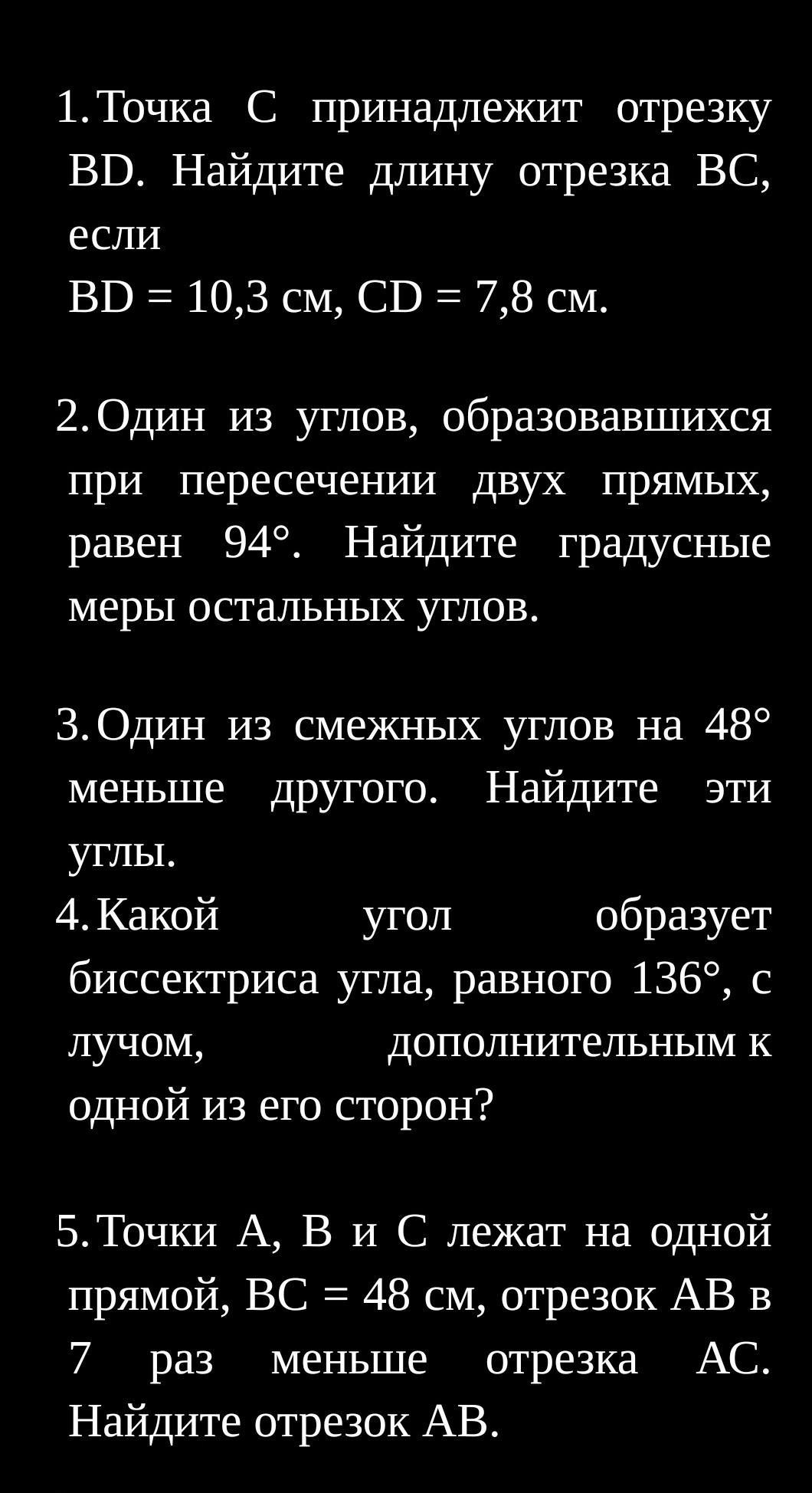Предмет: Геометрия,
автор: imflade86
помогите с геометрией ПОЖАЛУЙСТА
Приложения:

Ответы
Автор ответа:
0
Объяснение:
номер 1
BC=BD-CD
BC=10,3 - 7,8= 2,5
номер 2
1 угол=94°
2 угол = 86°
3 угол = 86°
номер 3
1)180°-48=132
2) 132:2=66
3) 66 + 48 = 114
Автор ответа:
0
Ответ:
1) 10,3-7,8=2,5
2)180-94=86
ответ: 94,94, 86,86
3) х+х+48=180
2х=132
х=66
66+48=114
отве: 66, 114
5) 7х=48+х
6х=48
х=8(см)
Объяснение:
Похожие вопросы
Предмет: Английский язык,
автор: sjgraf
Предмет: История,
автор: Аноним
Предмет: Русский язык,
автор: Аноним
Предмет: Алгебра,
автор: Марусенька1